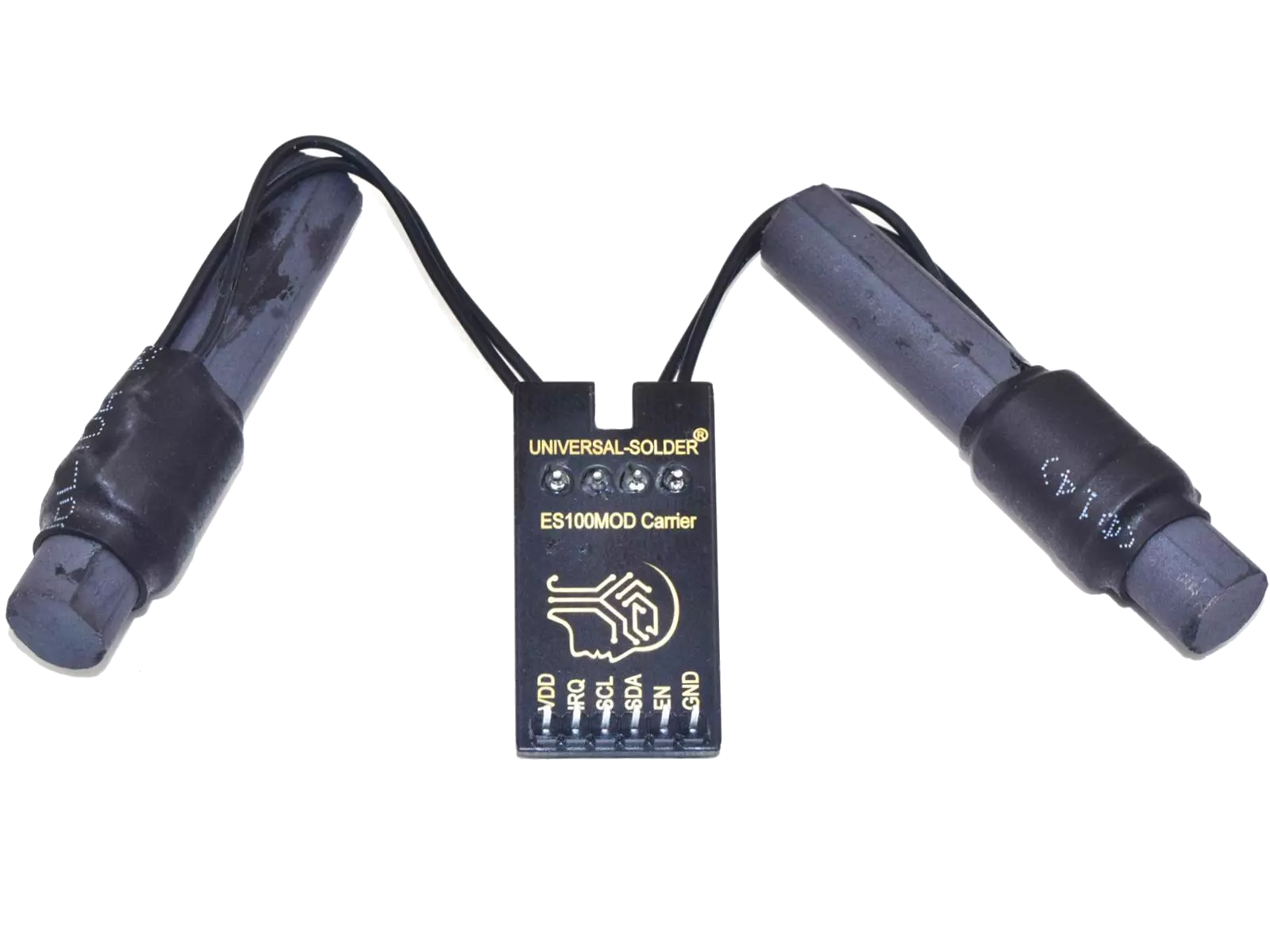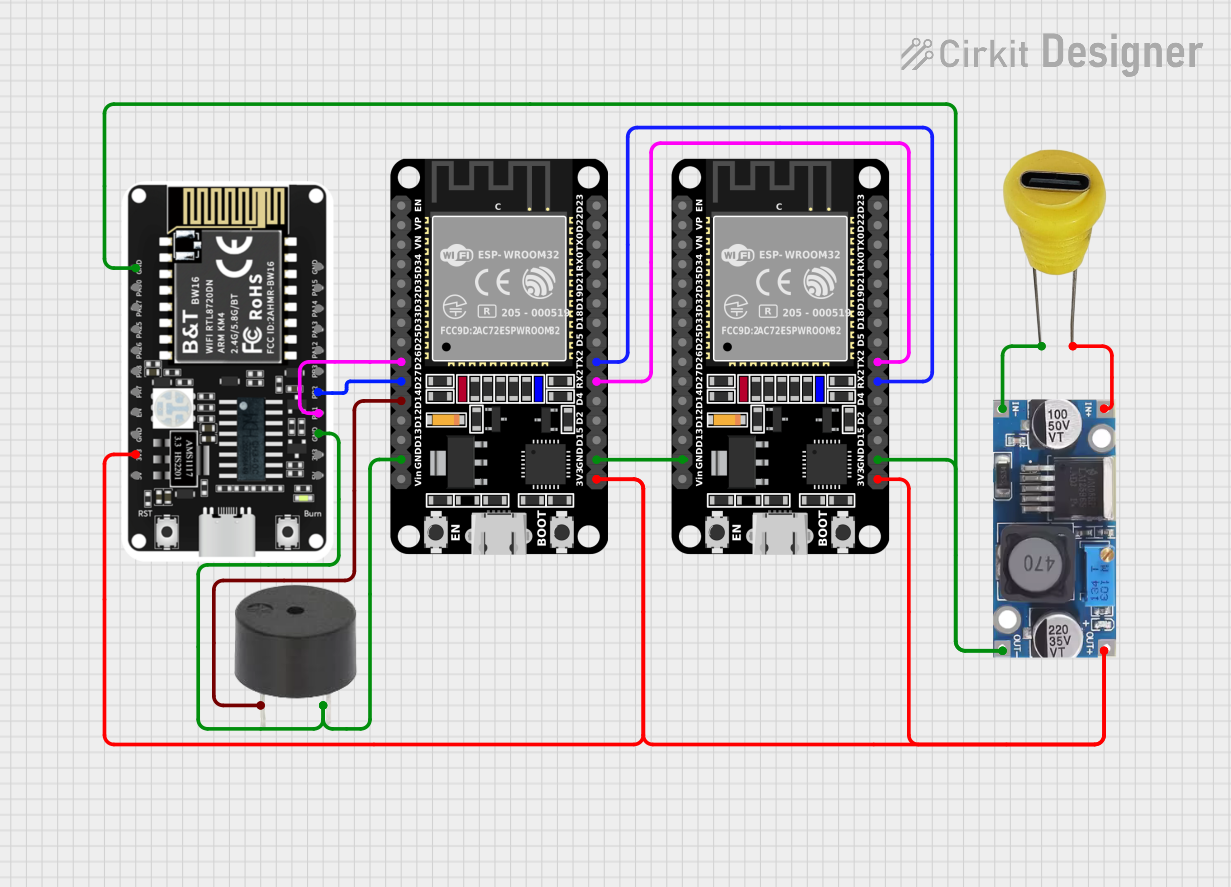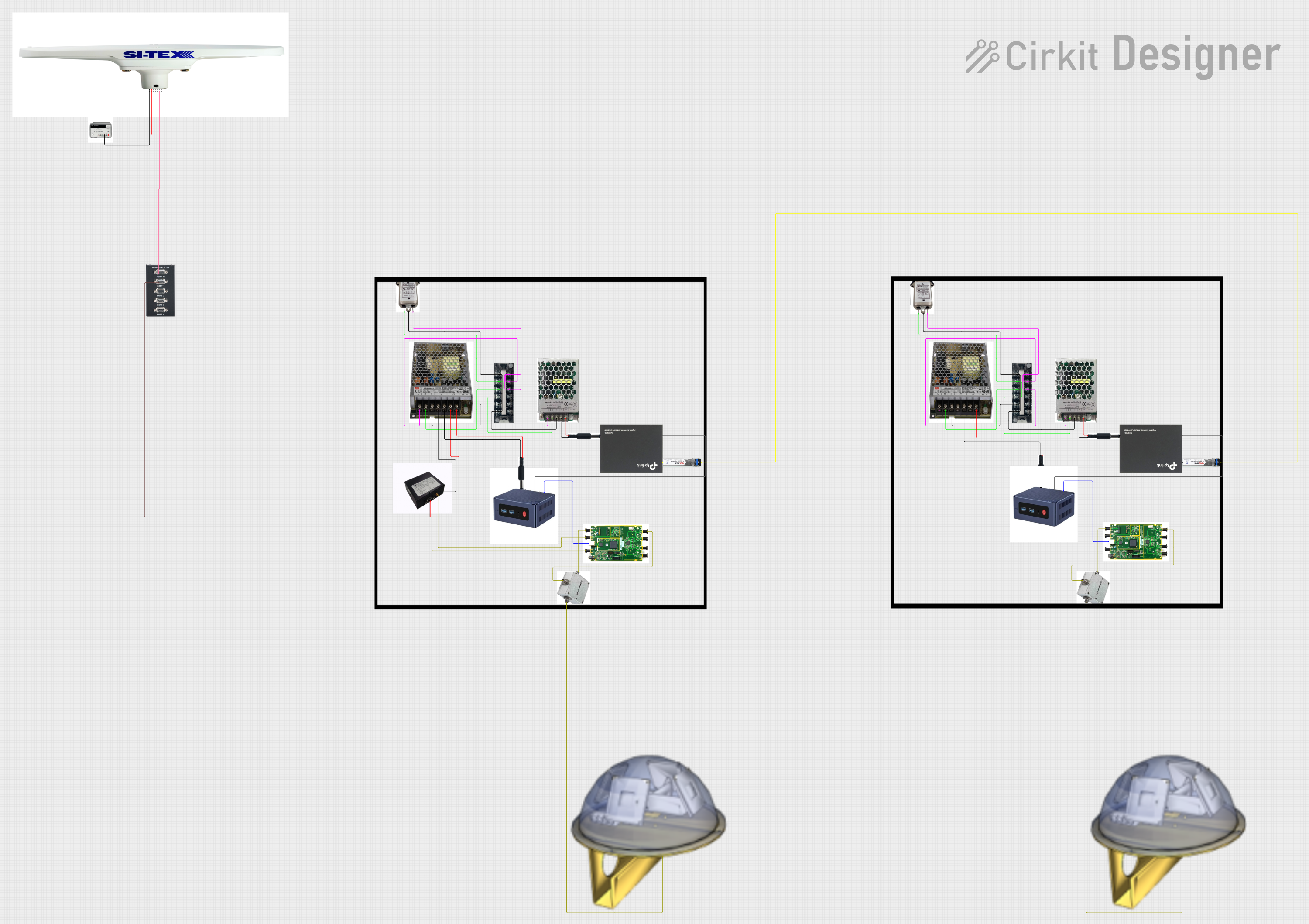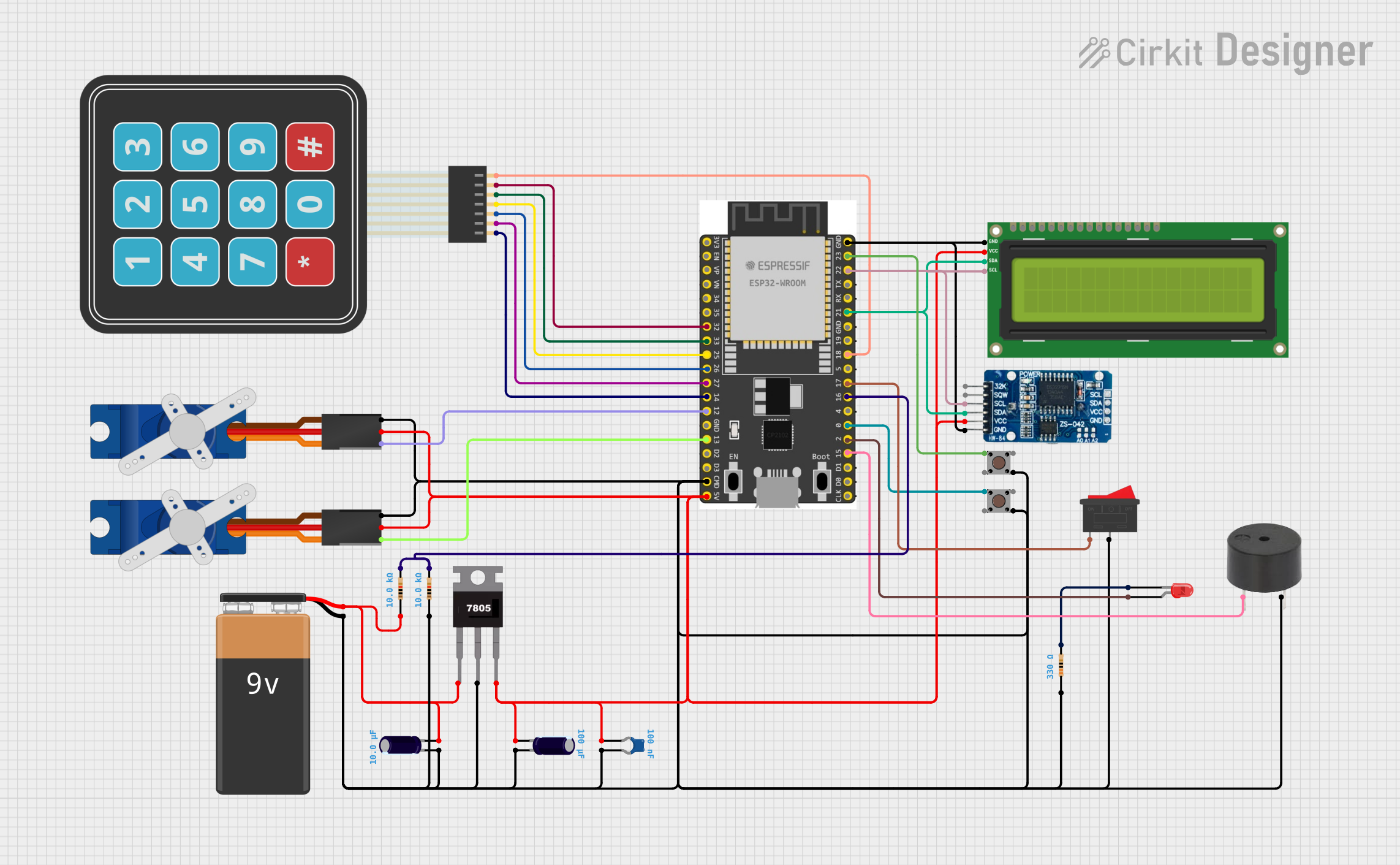
How to Use EverSet ES100 WWVB BPSK Atomic Clock Starter Kit: Examples, Pinouts, and Specs

 Design with EverSet ES100 WWVB BPSK Atomic Clock Starter Kit in Cirkit Designer
Design with EverSet ES100 WWVB BPSK Atomic Clock Starter Kit in Cirkit DesignerIntroduction
The EverSet ES100 WWVB BPSK Atomic Clock Starter Kit is a precision timekeeping module designed to synchronize with the WWVB time signal broadcast by NIST in Fort Collins, Colorado. Utilizing advanced Binary Phase-Shift Keying (BPSK) modulation, this kit ensures highly accurate time synchronization for a wide range of applications, including industrial systems, IoT devices, and consumer electronics.
This starter kit is ideal for developers and hobbyists looking to integrate atomic clock precision into their projects. It simplifies the process of receiving and decoding WWVB signals, making it an excellent choice for applications requiring reliable and accurate timekeeping.
Explore Projects Built with EverSet ES100 WWVB BPSK Atomic Clock Starter Kit

 Open Project in Cirkit Designer
Open Project in Cirkit Designer
 Open Project in Cirkit Designer
Open Project in Cirkit Designer
 Open Project in Cirkit Designer
Open Project in Cirkit Designer
 Open Project in Cirkit Designer
Open Project in Cirkit DesignerExplore Projects Built with EverSet ES100 WWVB BPSK Atomic Clock Starter Kit

 Open Project in Cirkit Designer
Open Project in Cirkit Designer
 Open Project in Cirkit Designer
Open Project in Cirkit Designer
 Open Project in Cirkit Designer
Open Project in Cirkit Designer
 Open Project in Cirkit Designer
Open Project in Cirkit DesignerCommon Applications and Use Cases
- Precision timekeeping in industrial and scientific equipment
- Synchronization of IoT devices and networks
- Consumer electronics such as clocks and watches
- Data logging systems requiring accurate timestamps
- Educational projects and prototyping
Technical Specifications
Key Technical Details
| Parameter | Specification |
|---|---|
| Manufacturer | EverSet |
| Part ID | ES100 |
| Signal Type | WWVB (60 kHz) with BPSK modulation |
| Operating Voltage | 2.2V to 3.6V |
| Current Consumption | 100 µA (typical during reception) |
| Operating Temperature | -40°C to +85°C |
| Time Accuracy | ±100 microseconds (synchronized) |
| Communication Interface | UART (9600 baud rate) |
| Dimensions | 25 mm x 25 mm x 5 mm |
Pin Configuration and Descriptions
The ES100 module has a 6-pin interface for power, communication, and control. Below is the pinout:
| Pin Number | Pin Name | Description |
|---|---|---|
| 1 | VCC | Power supply input (2.2V to 3.6V) |
| 2 | GND | Ground |
| 3 | RX | UART receive pin (connect to host TX) |
| 4 | TX | UART transmit pin (connect to host RX) |
| 5 | EN | Enable pin (active high) |
| 6 | NC | Not connected (leave unconnected) |
Usage Instructions
How to Use the Component in a Circuit
- Power Supply: Connect the VCC pin to a regulated 3.3V power source and the GND pin to ground.
- UART Communication: Connect the RX pin of the ES100 to the TX pin of your microcontroller and the TX pin of the ES100 to the RX pin of your microcontroller.
- Enable Pin: Pull the EN pin high (3.3V) to activate the module. When not in use, pull the EN pin low to conserve power.
- Antenna Placement: Ensure the module's antenna is placed in an open area, away from sources of interference, to receive the WWVB signal effectively.
Important Considerations and Best Practices
- Signal Reception: The WWVB signal is strongest at night. For optimal performance, test the module during nighttime hours.
- Antenna Orientation: Position the antenna perpendicular to the direction of the WWVB transmitter in Fort Collins, Colorado.
- Power Supply Noise: Use a low-noise power supply to avoid interference with the WWVB signal.
- UART Configuration: Set the UART baud rate to 9600, 8 data bits, no parity, and 1 stop bit (8N1).
Example Code for Arduino UNO
Below is an example of how to interface the ES100 module with an Arduino UNO to receive time data:
#include <SoftwareSerial.h>
// Define RX and TX pins for SoftwareSerial
SoftwareSerial es100Serial(10, 11); // RX = Pin 10, TX = Pin 11
void setup() {
Serial.begin(9600); // Initialize Serial Monitor
es100Serial.begin(9600); // Initialize ES100 communication
pinMode(9, OUTPUT); // Pin 9 for EN (Enable)
digitalWrite(9, HIGH); // Enable the ES100 module
Serial.println("ES100 WWVB Atomic Clock Module Initialized");
}
void loop() {
// Request time data from the ES100 module
es100Serial.write("T"); // Send 'T' command to request time
// Wait for a response
if (es100Serial.available()) {
String timeData = "";
while (es100Serial.available()) {
char c = es100Serial.read();
timeData += c;
}
// Print the received time data to the Serial Monitor
Serial.println("Received Time Data: " + timeData);
}
delay(60000); // Wait 1 minute before requesting time again
}
Troubleshooting and FAQs
Common Issues and Solutions
No Signal Reception:
- Ensure the antenna is properly connected and positioned.
- Test the module during nighttime for better signal strength.
- Verify that the power supply is stable and noise-free.
Incorrect Time Data:
- Check the UART connections and ensure the baud rate is set to 9600.
- Confirm that the EN pin is pulled high to activate the module.
Module Not Responding:
- Verify the power supply voltage (2.2V to 3.6V).
- Ensure the EN pin is not left floating; it must be actively driven high or low.
FAQs
Q: Can the ES100 module work indoors?
A: Yes, but signal reception may be weaker indoors. Place the antenna near a window or in an open area for better results.
Q: What is the maximum distance from the WWVB transmitter for reliable operation?
A: The WWVB signal can be received across most of North America, but reception quality depends on environmental factors and interference.
Q: Can I use the ES100 module with a 5V microcontroller?
A: Yes, but you must use a level shifter to step down the 5V logic levels to 3.3V for the ES100 module.
Q: How often should I request time data?
A: It is recommended to request time data once every minute or as needed for your application.
This documentation provides a comprehensive guide to using the EverSet ES100 WWVB BPSK Atomic Clock Starter Kit. For further assistance, refer to the manufacturer's datasheet or contact EverSet support.